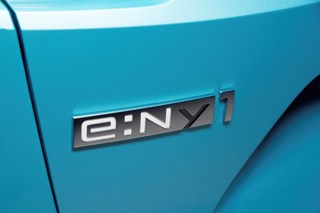What is in store for the automotive industry in 2019? Russell Puttick, VP of customer and strategy, CDK Global, shares his view ahead of tomorrow's webinar on The Future of Automotive Retailing.
Working for a global company, we have a bird’s eye view on innovation in the automotive industry across the world. We watch technologies cascade from territory to territory; we hear what keeps customers up at night or leaping out of bed in the morning; we observe the latest developments from OEMs and track the latest consumer behaviour and retail habits.
For 2019, I believe there are five trends that will change the face of the automotive industry.
Continued Consolidation
OEMs will, as they have for the past 24 months, continue to consolidate as they seek to address overcapacity in the industry. Expect to see more deals akin to PSA’s acquisition of Opel and Vauxhall in late 2017.
Alongside acquisition deals, OEMs that have previously been in direct competition with one another may find themselves looking to collaborate – particularly when it comes to specific vehicle segments such as urban electric vehicles. I can envisage a situation where a Chinese manufacturer might work with an established European OEM to build an electric van, or similar, to get a foothold into the market.
From a dealer perspective all these changes will influence trading, potentially changing the model mix and the associated business tools required to sell and service these vehicles. In some cases, this will open new segments to dealers, so arming themselves with capabilities and data to exploit these opportunities quickly will become very important.
Channel Experimentation
I doubt there is a car company out there today that isn’t looking for ways of reaching the consumer directly. Many are already trialling experimental sales techniques, from pop-up stores through to a complete digitized subscription services.
The challenge for OEMs has been with delivery and servicing – the ‘last mile’ of the car ownership journey. Until today, there is simply no other way to efficiently deliver these to the customer other than via the dealership platform. Dealers must ensure they are providing the best service possible, to continue to seek ways to hyper-personalise and exceed customer expectation, if they are to continue to be a valuable partner for OEMs.
But experimentation continues. OEMs are looking to new ownership models, new breeds of car, and all of these could impact the dealer. There is no doubt that the first OEM to get it right will lead the way in a direct to customer market, and others will follow – fast.
It might be too big an ask to expect an existing brand to disrupt the market order, but a new market entrant, such as an emerging brand, could decide to challenge the established models and set up new pathways to the customer. I suspect a specific vehicle type, meeting a specific user need, could truly conquer a fully digital ownership or usage journey.
Telematics facilitating a change in ownership models
Self-diagnostic systems in cars are well established, but significant advances in telematics over the next year could herald a fundamental shift in the relationships between the car owners, dealers, and car companies.
After sales activities have traditionally been based on the dealer-owner relationship. The changes in telematics will see this relationship shifting to the car company and the car itself.
In the truck market, this change in relationship has already been witnessed. On board telematics systems continually emit status signals, alerting the truck company to updates and repairs as they are required. In short, the technology is facilitating automatic interventions, enabling servicing to take place as and where needed and not on the traditional time/mileage basis.
This intervention model of servicing could put the power back in the hands of the OEM, who will be able to receive information on the status of each vehicle. In theory it is then up to the OEM to influence who services a vehicle at a particular time and where, alerting the car owner to the best provider.
In this scenario, the dealer needs to ensure they remain a critical part of an OEM’s fulfilment network, by performing against core criteria including customer reviews, customer satisfaction surveys, concierge services, etc., to keep them at the top of the provider list. The best dealers will be very hard to replace.
The rise of subscription
Thanks to the rise of brands like Zip Car, Lyft and tech companies such as YoYo and Cluno, consumers now have the option of using a vehicle instead of owning one, paying a fee in return for usage. With the continued rise and power of the ‘now economy’ it is unsurprising that nearly every car brand is either developing their own form of subscription model or investing in companies who already do this.
Over the next year subscription services will continue to boom, particularly in urban areas where the cost of ownership, congestion, and pollution make car ownership more challenging. Subscription presents consumers with another car purchasing option which does not necessarily involve dealers.
This model is still evolving. The trick for everyone involved in the automotive retail industry is to understand how and where they play a role. Where subscription is successful, there are a range of new services that need to be delivered and progressive enterprises, including dealers, should be prepared to exploit these. We are also seeing examples of dealerships offering used cars as part of a subscription.
Breakthroughs in battery technology
There really is only one reason we are not all driving electric vehicles - ‘range anxiety’. Will we have enough power to get us where we need to go? This is however, set to change.
In early 2019 we will see the launch of next generation electric vehicles with a much greater range, which in turn will increase their popularity and make them more affordable. We are also going to see governments incentivising ownership of electric vehicles over those with combustion engines. This may not be in the form of subsidising ‘clean’ vehicles, but almost certainly will come in the form of punishing ‘dirty’ ones.
These two factors will result in a far greater percentage of pure electric vehicles in most markets. If we take Volkswagen Group as an example, they stated in their 2018 AGM that by 2025 they will have capacity to build three million electric vehicles a year.
Further, IONITY, a joint venture between BMW, Daimler, Ford and the Volkswagen Group has set out to build out a pan-European network of 400 fast charging stations for electric vehicles by the year 2020.
The impact of this shift on the dealer, particularly when it comes to service and care, will be significant. Current vehicle servicing is largely focussed around the internal combustion engine. With this no longer a factor, servicing will largely be around brakes, tyres and suspension – and a lot of people can service brakes and tyres.
It is not a big leap to see how the rise of ‘service-light’ electric vehicles combined with the advances in telematic-led service interventions will remove a significant hurdle for OEMs looking to create deeper, direct consumer relationships.
Smart dealers need to be thinking, and thinking fast, about how they fit into this new ownership dynamic.
Conclusion
The fact of the matter is dealers are not disappearing – they are a vital cog in the car retail wheel.
They do, however, need to respond to changing market conditions, to reinvent the role they play with both consumers and OEMs, ensuring their offer not only remains relevant, but puts them at the forefront.
Wherever there is disruption there is opportunity.
Author: Russell Puttick, VP of customer and strategy, CDK Global

















Login to comment
Comments
No comments have been made yet.